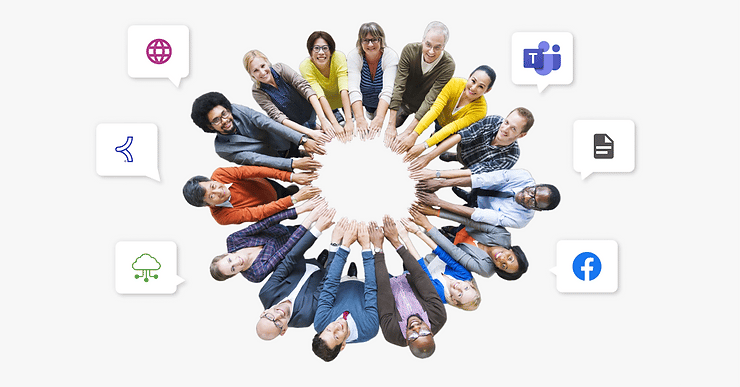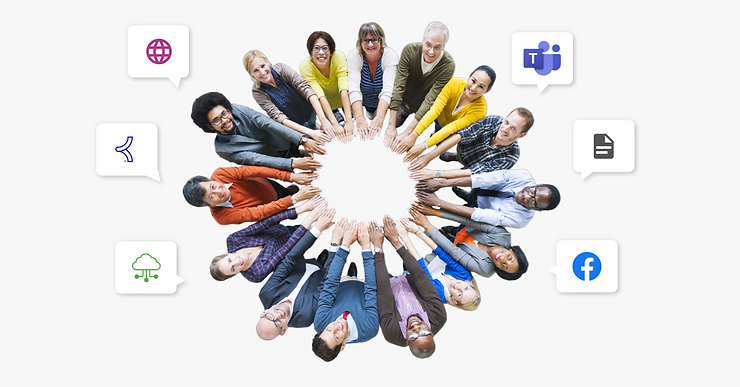10 steps to a ubiquitous online community

The power and value of digital enterprise communities is well documented. By empowering users to self-support and facilitating access to subject matter experts, companies are able to significantly reduce customer service costs while delivering better service at the same time.
Today, however, traditional digital communities risk slipping into obsolescence if they don’t adapt to current market realities. Today’s customers are accustomed to getting what they want, how, when, and where they want it. They shop from their desk and have items delivered to their doorstep. They watch movies on demand. Even working from anywhere there is an internet connection has become the norm.
Companies can no longer get away with expecting their users to come to their online community to find the information they are looking for. Instead, companies need to understand their customers, know how and where they like to consume content, and deliver value to them wherever they are.
In short, valuable content needs to be ubiquitous, rather than confined to a single platform. In this article, I share 10 things you can do to enable your entire user and stakeholder base to engage with each other and derive maximum value from your digital community content, from any connected platform or touch point.
1. Integrate your online community with other cloud platforms
Most of today’s customer engagement software providers have invested in APIs (application programming interfaces) so their customers can integrate their community platforms with other cloud repositories and applications.
This allows seamless sharing of content and user engagement between connected properties, whether they be internal (website, blog, support portal) and external (social media groups). This, in turn, permits the deployment of the other nine suggestions mentioned here.
2. Think in terms of distribution, rather than destination
The digital community platform will continue to be a place where users visit and contribute. But rather than seeing the community as a destination, it should instead be treated like a source of content and knowledge assets that can be distributed across your enterprise ecosystem of web properties (both internal and external).
As a result, users that may have never visited your community can derive value from your content and engage with your company from wherever they choose to be.
3. Promote subject matter experts
We all know that community content doesn’t just appear; it is created, curated and contributed by a host of subject matter experts (SMEs) that spend their time on the platform. Providing ways for SMEs to distribute their content more broadly across your cloud properties not only promotes them by exposing them to a bigger user base, but it also adds value to customers by connecting them with expertise they might have otherwise not have known about.
4. Automate multi-directional content syndication
Multi-directional content syndication (publication) surfaces valuable content to users no matter what connected platform they engage from. Someone might post a question, a solution, or a video to your community, but only users on that community will see it and engage with it if it’s not shared elsewhere.
Publishing content across multiple platforms in a way that lets all users, including those who don’t visit your community, comment and engage with it can be automated based on a customizable set of rules.
This allows valuable access to SMEs and information to any visitor across your company’s ecosystem of connected properties.
5. Surface content at all relevant touch points
Consider all the ways users engage with your company and how valuable information might be dynamically and selectively surfaced to them. For example, deploying an AI-enabled recommendations engine to your support case creation form can surface information related to the issue they are describing as they type it into the form.
The same functionality can be deployed on live chat software. Not only does this enhance the user experience, but it reduces costs through case deflection.
6. Connect internal and external stakeholders
Internal knowledge workers who can offer solutions and helpful information on your community often spend a lot of their workday on internal collaboration platforms like Slack or Teams.
You can integrate these collaboration tools with your community so that experts can engage with your users from within the application, rather than having to jump over to the community to see and respond to threads. This not only raises productivity internally, but also facilitates access to information for users.
7. Go global through dynamic translation
With your cloud properties connected and with automated multi-directional content syndication in place, dynamic translation can be easily applied to enable all of your users to collaborate with each other, in any language.This allows all users to read and write content in their preferred languages, no matter what language the original content was written in. English, Spanish and Japanese speakers can all contribute to the same thread in their own language and their counterparts will read what they wrote in a different language, all in near-real time.

After deploying this solution, the director of global communities at one of our Fortune 1000 clients said, “When you can ask a question in one language and someone can provide an answer in a different language – all in the same thread – that's the magic right there. That's the real wow factor.”
8. Enable unified, intelligent search
Unified search will surface relevant content from any connected cloud property in a response to a query, rather than just surfacing content from the platform where the search is conducted. This enables users to find valuable information that they may not have even known existed and may never have found if they didn’t know where to look.
9. Move to point-of-consumption reporting
Every community platform has analytics that help tell the story of user activity. But if your community platform isn’t siloed, then your analytics shouldn’t be, either. Community platform-confined metrics like MAU (monthly active users) do not tell the complete story of how users engage with your content.
As your community content is syndicated and consumed across the enterprise ecosystem, your analytics and reporting tools should pull data in from across your connected properties to tell the full story. There are a host of business intelligence tools that can support such reporting, such as Power BI, Google Studio, or Tableau.
10. Manage your integrations with an iPaaS (integration platform as a service)
Implementing the deep integrations I’ve mentioned in this article can get unwieldy. Enterprises often have thousands of systems integrations, which all need to be configured and managed. iPaaS reduces the costs of building and deploying integrations, optimizes utilization, quickens time to value, strengthens security, and much more.
iTalent Digital’s SmartConX iPaaS streamlines, automates and reuses the foundational elements of an integration so you can effortlessly connect different platforms together, without adding needless complexity to your systems configurations. We have developed a suite of pre-built integrations that you can plug into SmartConX to enjoy the benefits in no time.
Or, take advantage of iTalent’s CustomConX Service to build your own unique integration. Our article about the benefits of an iPaaS provides more details on how an iPaaS can tangibly benefit your business.
The iTalent difference
Our innovative work in the community services space has earned us more than 20 industry awards. Our Enterprise Community and Collaboration Practice delivers end-to-end community support including community implementation, management and moderation, DevOps and ongoing managed services.
Contact our team at community@italentdigital.com to learn more about how your digital communities can be leveraged to deliver a superior customer experience and contribute to your company’s competitive advantage.
You may also like:
Six mistakes online community managers make



